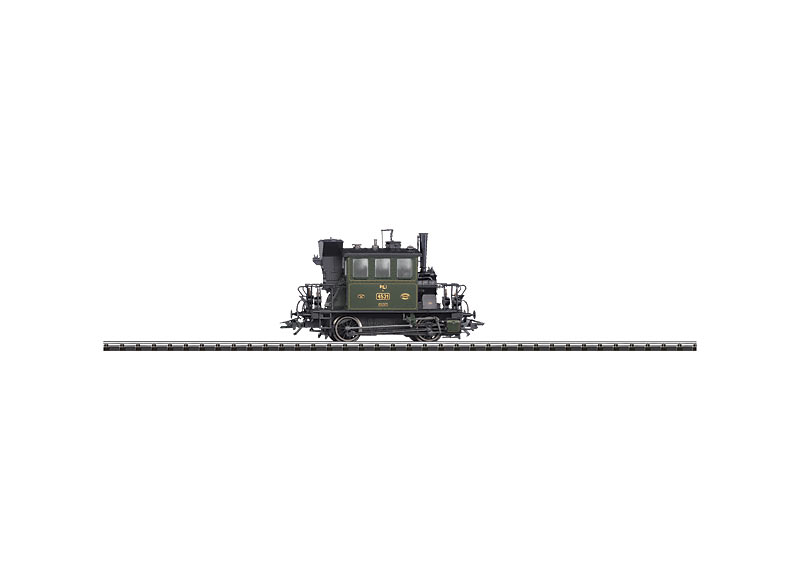Tank Locomotive.
Prototype: Royal Bavarian State Railways (K.Bay.Sts.B.) class PtL 2/2 (Glaskasten / Glass Box). The locomotive looks as the prototype did in Era I.
Most Important Facts
| Article No. | 22021 |
|---|---|
| Gauge / Design type | Trix H0 / |
| Era | I |
| Kind | Steam Locomotives |
Check with your local dealer Find Dealer
Highlights
- Miniature can motor with a flywheel. DCC/Selectrix decoder with analog operation recognition. The direct control can be controlled digitally. Provincial railroad production series without a jackshaft.
-
Product description
Model: The locomotive comes with a digital decoder for DCC, Selectrix, and analog operation with automatic system recognition. The locomotive can also be run in conventional operation. Special controlled can motor. 2 axles powered. The dual headlights change over with the direction of travel, will work in conventional operation, and can be controlled digitally. The direct control (acceleration/braking delay) can be controlled with DCC, Selectrix, or Trix Systems. The inner boiler is made of metal. The locomotive has numerous separately applied handrails and grab irons. Fine reproduction of the boiler fittings and other details. The locomotive has a typical dark green Bavarian provincial railroad paint scheme with thin striping.
Length over the buffers 8.0 cm / 3-1/8".New: First Glaskasten model of the Bavarian production series without a jackshaft, with a built-in DCC/Selectrix decoder with automatic analog operation recognition.
Spare parts for our articles can be found here in our spare parts search.
-
Publications
- Main Catalog 2006 - New Items 2006
-
Prototype information
Branch Line Legend - The legendary DB class 98.3 (former Bavarian class PtL 2/2) branch line locomotives were seldom designated with their exact class number, because these nimble branch line units were much better known with the nickname "Glaskasten" ("Glass Box"). The comparably roomy engineer's cab is to thank for this affectionate name. The cab surrounded a large part of the boiler and its luxurious glassed in area gave the engineer a good view of the tracks in both directions. Partially automatic coal firing enabled economical one-man operation of these locomotives. This meant they were predestined for light weight branch line service. A last group of 13 units of this universally popular branch line locomotive was built starting in 1911 without a jackshaft as part of the running gear.




